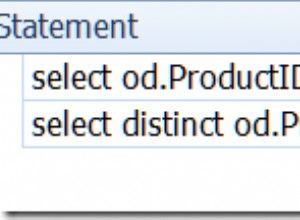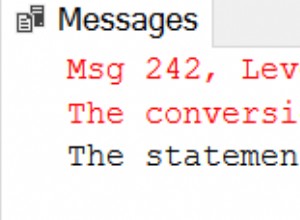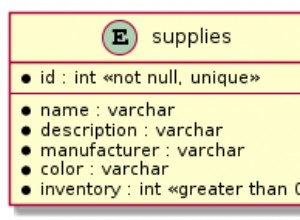Erfahren Sie, wie Sie die UTL_FILE verwenden Paket zum Exportieren von Daten aus einer Tabelle in die CSV-Datei in Oracle PL/SQL.
In Oracle das Paket UTL_FILE enthält viele Prozeduren und Funktionen zum Schreiben einer Textdatei. Nachfolgend finden Sie die Syntaxdetails und die notwendigen Schritte zum Schreiben einer Datei:
Syntax und Schritte zum Schreiben einer Datei mit UTL_FILE
-- Declare a variable to store file type
n_file UTL_FILE.FILE_TYPE;
-- Open the file in Begin section, it will open the file and return the file handle into the variable n_file
n_file := UTL_FILE.FOPEN('DIR_OBJ', 'YourCSVFileName.csv', 'w', 4000);
-- Write a single or multiple lines
UTL_FILE.PUT_LINE(n_file, 'abc, xyz, xxx');
-- Close the file
UTL_FILE.FCLOSE(n_file); Einfaches Beispiel
Declare
n_file Utl_File.File_Type;
Begin
-- The directory object MY_DIR must be exist or create a new one
n_file := Utl_File.Fopen('MY_DIR', 'myfile.csv', 'w', '4000');
Utl_File.Put_Line(n_file, 'First line.');
Utl_File.Put_Line(n_file, 'Second line.');
Utl_File.Put_Line(n_file, 'Third line.');
Utl_File.Fclose(n_file);
End;
Wie ich im obigen Beispiel erwähnt habe, ist das Verzeichnisobjekt MY_DIR muss vorhanden sein. Das Verzeichnisobjekt in Oracle ist ein Verweis auf das physische Verzeichnis auf dem Server. Das Folgende ist ein Beispiel für das Erstellen eines Verzeichnisobjekts in Oracle:
-- Windows example CREATE OR REPLACE DIRECTORY CSVDIR AS 'd:\oracle\csvfiles'; -- Linux example CREATE OR REPLACE DIRECTORY CSVDIR AS '/usr1/oracle/csvfiles';
Um mehr über das Verzeichnisobjekt in Oracle zu erfahren, überprüfen Sie diesen Link.
Daten aus einer Tabelle in CSV im Oracle-Beispiel exportieren
Das Folgende ist ein Beispiel für eine gespeicherte Prozedur in Oracle, die die Daten aus der EMP-Tabelle in eine CSV-Datei exportiert:
Create Or Replace Procedure exp_emp_data Is
n_file utl_file.file_type;
v_string Varchar2(4000);
-- get the data using cursor
Cursor c_emp Is
Select
empno,
ename,
deptno,
sal,
comm
From
emp;
Begin
n_file := utl_file.fopen('CSVDIR', 'empdata.csv', 'w', 4000);
-- if you do not want heading then remove below two lines
v_string := 'Emp Code, Emp Name, Dept, Salary, Commission';
utl_file.put_line(n_file, v_string);
-- open the cursor and concatenate fields using comma
For cur In c_emp Loop
v_string := cur.empno
|| ','
|| cur.ename
|| ','
|| cur.deptno
|| ','
|| cur.sal
|| ','
|| cur.comm;
-- write each row
utl_file.put_line(n_file, v_string);
End Loop;
-- close the file
utl_file.fclose(n_file);
Exception
When Others Then
-- on error, close the file if open
If utl_file.is_open(n_file) Then
utl_file.fclose(n_file);
End If;
End; Nachdem Ihre gespeicherte Prozedur erstellt wurde, führen Sie sie aus, um die Daten zu exportieren:
Begin
exp_emp_data;
End; Verwandte Tutorials:
- Dienstprogramm:PL/SQL-Prozedur generieren, um Daten aus einer Tabelle zu exportieren




